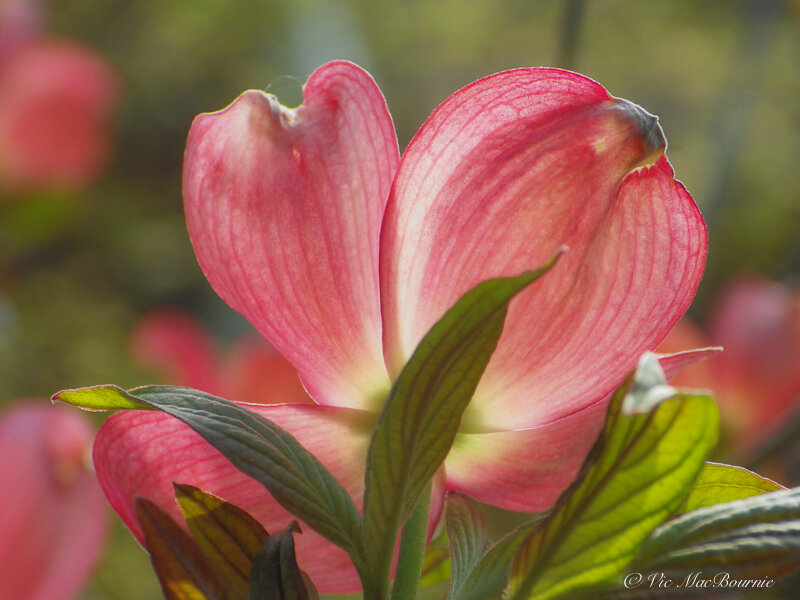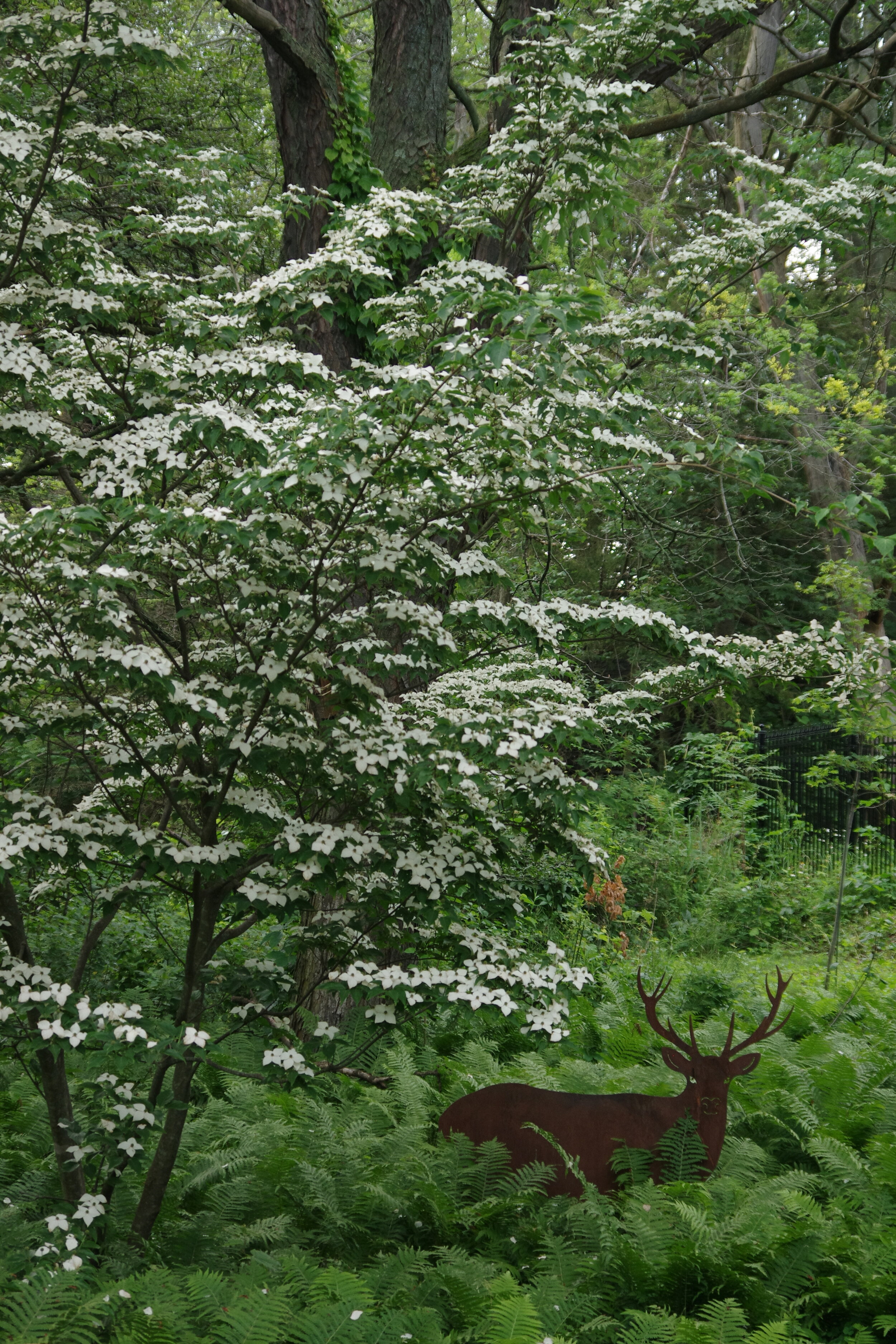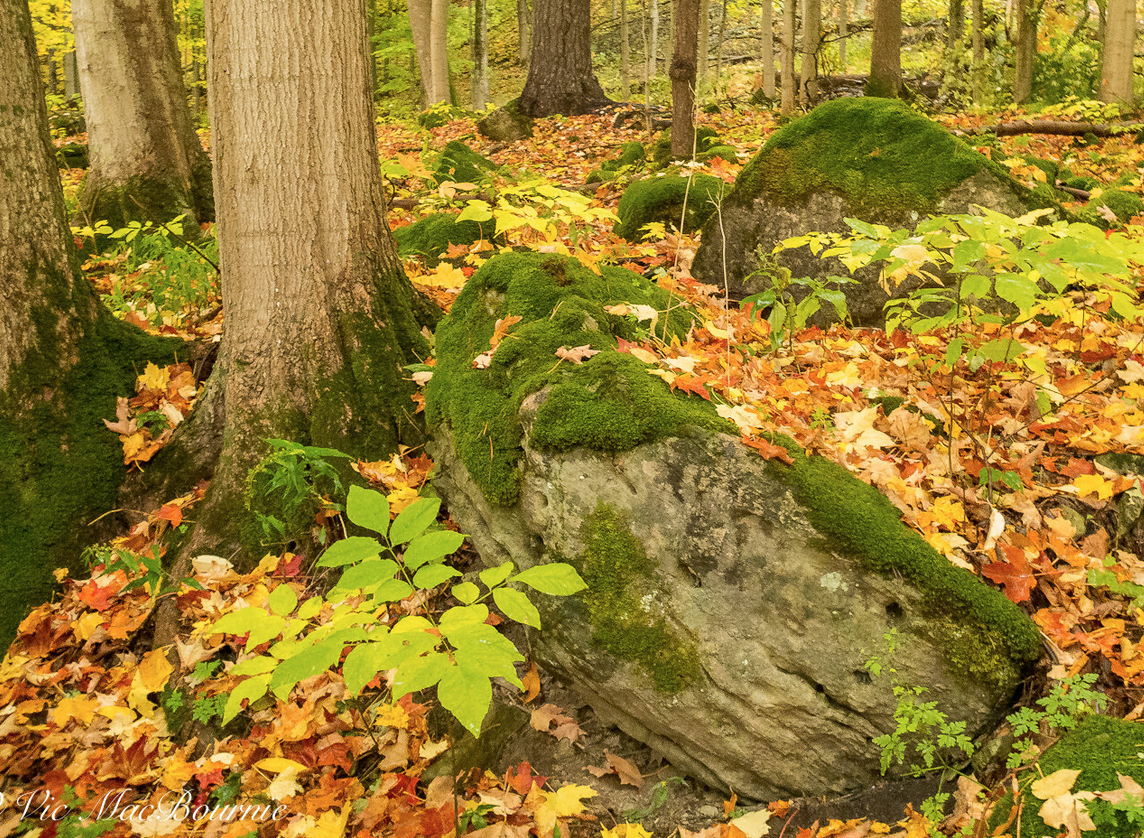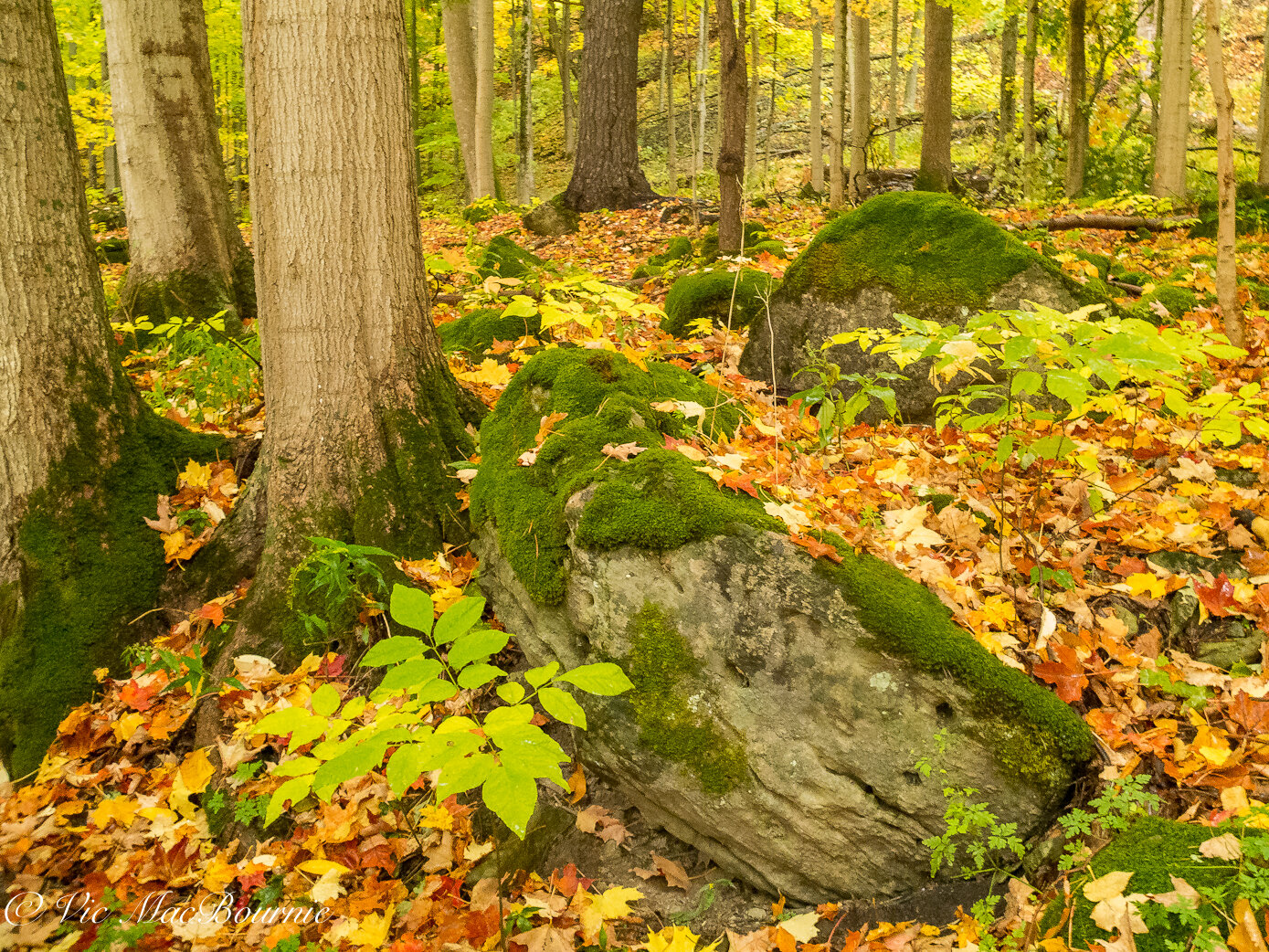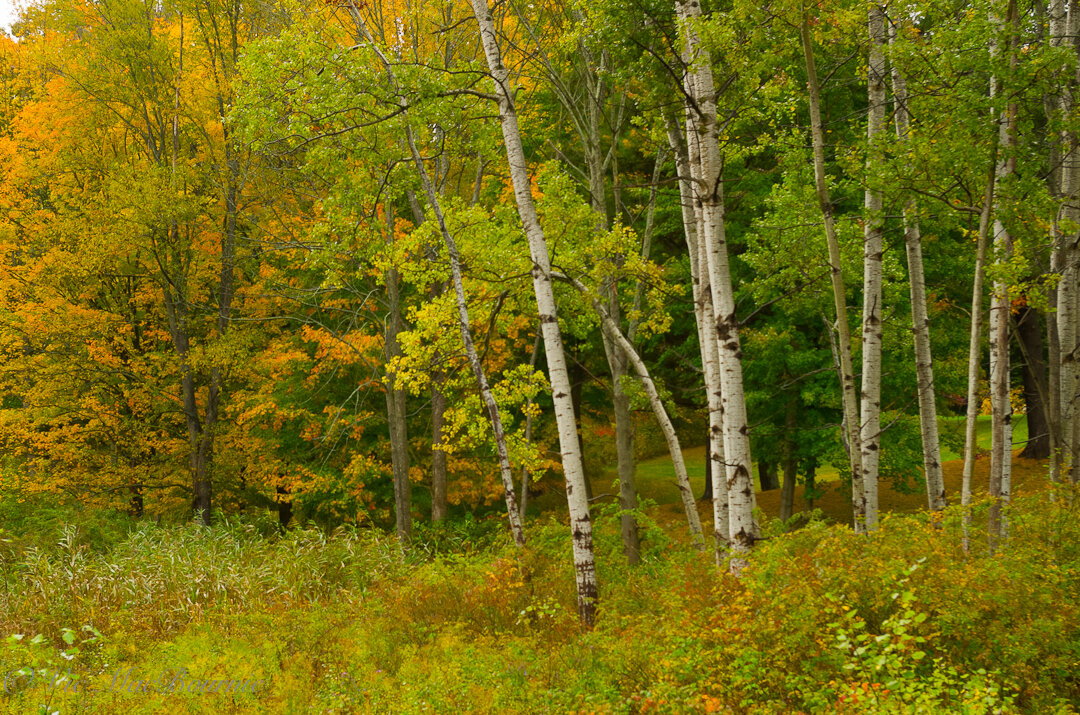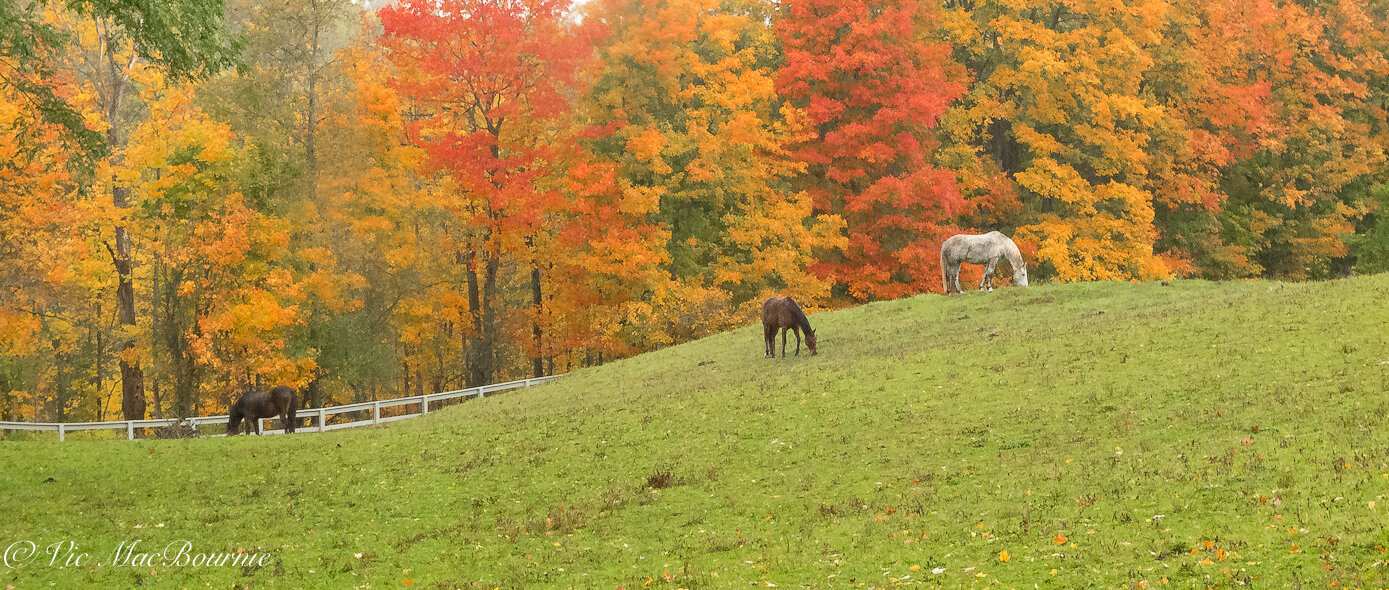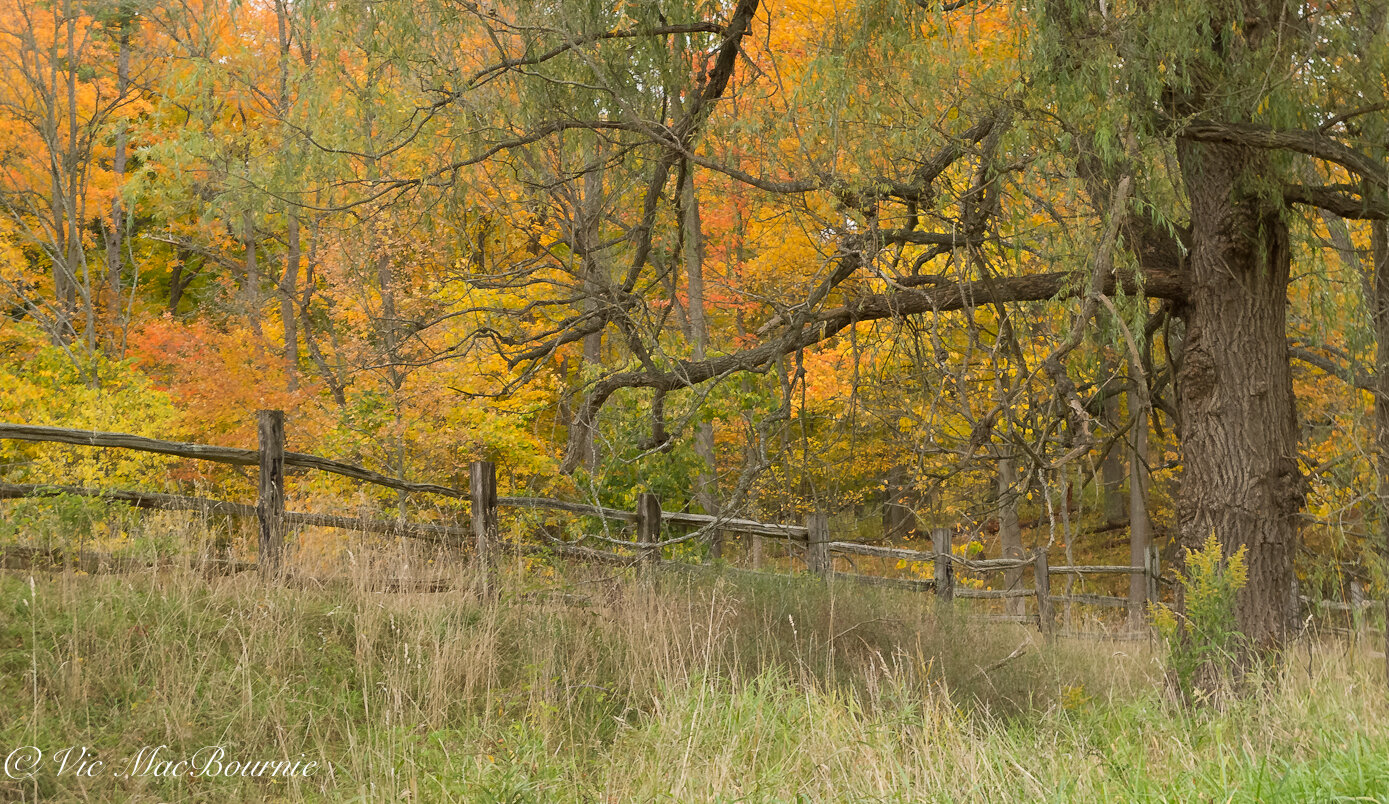Building your Woodland: One Tree at a time
Dream of what your woodland garden can be and we will work together to make it real. By using native and non-native trees, plants and flowers, you can transform your garden into a wildlife haven. Then spend the day photographing the nature around you.
Woodland wildlife garden needs time to mature
A woodland garden can be as big or as small as you want. Start with a single tree in your yard and try to imagine what that tree can become.
Remember a woodland garden can take time to mature into perfection. Like a freshly-built home that lacks the layers living brings to it, a woodland needs that same time to develop the multiple living layers that make it the inviting place we want to experience. It too needs its spirit; one that starts deep in the soil and stretches high into the upper layers of the forest canopy. If you are just starting out developing your woodland garden design, the first rule to understand is that a woodland garden is all about layers. Three layers really, but you could argue four even six and still be correct.
It all starts with the upper canopy
The top layer, the upper-level canopy, is what builds the strength of the woodland over time. If you do it right, the middle layer is where much of the beauty resides. Then there is the shrub layer and finally the ground layer, also not without its share of beautiful things. The ground layer, appropriately made up of ground covers, forms a protective layer that encourages all that is above it to prosper.
Early morning offers a different experience in the Woodland for both photographers and dreamers. Get up early, catch the light, and sneak in an afternoon nap.
Maybe, if you are like me and bought into an older neighbourhood, you are already blessed with a mature tree or several that helps to create the critical upper canopy. If you are not blessed with any large trees on your site, that large maple growing in your neighbour’s yard casting its lovely shadow over your yard will do the trick too. Remember though, your neighbour could cut that tree down and your upper canopy can disappear in an afternoon. Better to plant your own as soon as possible as a backup to your grumpy neighbour’s tree.
This photo illustrates the layering of our mature woodland garden. A large locust and tulip tree form the upper canopy, while a mautre Cornus Kousa in full flower forms part of the mid-canopy. The kousa is joined by serviceberry, redbuds and Cornus Florida in the lower canopy of this area of the garden. Ostrich ferns fill in as the primary ground cover.
Large trees form the upper canopy
When we talk upper-level canopy, we’re talking the big boys of the tree world.
Think maples, locusts, lindens, oaks and a host of other native trees that will grow large enough to eventually tower over the garden.
If you live in the Carolinian zone (link to my post) or a similarly appropriate area and need a quick canopy, consider planting a couple of Tulip trees. They are fast-growing native trees, growing up to 35 metres tall. In fact, they are among the tallest and straightest trees in the forest. In fact, they were often the tree used as telephone poles because of their straight growth habits. Their canopy can be trimmed up high as they shoot to the sky, and the shade they throw is open enough to allow understorey plants to grow happily.
Tulip trees have a spectacular yellow-green 5 centimetre long spring blooming, tulip-shaped flowers. Although the fast-growing tree is not the best host of insects and caterpillars that provide food for birds, the seeds of the tulip tree grow every year and are a source of food for birds and small mammals.
Oaks are kings of biodiversity
If you are looking for the perfect tree to form your upper canopy, you would be hard pressed to do better than one of the mighty oaks. Consider planting an oak near your tulip trees where it will grow up to provide a future canopy after the tulip trees have served their immediate goal of providing a fast and effective canopy in the short-term.
What makes Oak trees so important?
As Douglas W. Tallamy explains in his book Bringing Nature Home: How you can sustain wildlife with Native Plants, (link to my review of the book) a single white oak tree can provide food and shelter for as many as “22 species of tiny leaf-tying and leaf-folding caterpillars.” These combined with all of the other “lepidopterans (moths and butterflies), heteropterans (true bugs), homopterans (aphids, plant hoppers,and scales), thysanopterans (thrips), orthopterans (katydids, grasshoppers, and crickets), … that develop on white oaks are considered s well, you can appreciate how important this one plant species is to the mintenance of biodiversity.
In fact, a single oak can support up to 534 different species and leads the list of important native trees providing biodiversity in our forests and woodlands.
In Tallamy’s list, The willow is second supporting 456 species followed by cherrry and plum (also 456); birch trees (413); poplar, cottonwood (368); crabapple (311), Maple, box elder (285), Elm (213); pine (203); Hickory (200); Hawthorn (159); spruce (156) …”
If attracting birds and creating a biodiversity of insects, caterpillars, moths and butterflies in your garden is important to you, I urge you to get Tallamy’s book and use it as a bible for creating your backyard landscape design.
Blessed with mature trees in our yard
When we bought our home here in southern Ontario some 25 years ago, my wife and I were blessed with several large trees on the property, including two lovely locust trees, a large linden and Austrian pine in the backyard and two large maples in the front yard of the property. Since then, more trees big and small (at last count 28) have joined the originals to help form the foundation of our woodland.
The understorey: Where the (real) fun starts
The middle layer is the one that can really shine in the woodland.
This is where you can introduce a myriad of flowering trees. Think flowering dogwoods, both the native variety (Cornus Florida) with a multiple of hybrids or the prolific Kousa Dogwoods that flower later in the season after the leaves appear on the branches. A combination of the two gives you a magnificent show from early spring into summer. Then, if you have room, intermingle a couple of Redbuds (link to my post on Redbuds) or Serviceberries between the dogwoods. Their ethereal flowers are absolute showstoppers in any garden big or small.
And, if that’s not enough, how about a couple of azaleas growing beneath the Dogwoods, Serviceberries and Redbuds. That’s a showstopper.
These are just a few ideas to think about while you contemplate your Woodland. Future posts will delve a little deeper into the different layers, so stay tuned. For example here is a post on three of my favourite groundcovers. Here is another post on a favourite groundcover for a hot dry location. This post looks into moss as a ground cover and plants that create a similar experience as moss in the garden.
I would love to hear some of your planting ideas for your top two layers your Woodlands. Share them with us below in the comment section.
This page contains affiliate links. I try to only endorse products I have either used, have complete confidence in, or have experience with the manufacturer. Thank you for your support.
Five great books for woodland gardeners
A gift guide to five great woodland garden books that every gardener young and old will cherish in their collection and use this winter to help create a vision and turn it into a reality this spring.
These books will help you plan your garden vision
It’s almost time to curl up with a good gardening book and plan your vision for next season.
To help you focus that vision, here are five outstanding garden books every woodland gardener will cherish this winter when snow blankets the earth.
1) The American Woodland Garden: Capturing the Spirit of the Deciduous Forest.
It’s another excellent book by Rick Darke and published by Timber Press, which specializes in outstanding books for garden enthusiasts.
The publisher’s book excerpt calls the book “a clarion call to a new awareness of our relationship to the natural world.” And adds that it “will take its rightful place among the classic works that have influenced our concept of the American landscape.”
Be sure to check out the outstanding selection of books (used and new) at alibris Books. (see ad below)
For more suggestions and some of my favourite garden-related books and items, be sure to check out my Favourite Things post.
The book is pretty much sold out but available on Amazon’s used market. It scores an impressive rating. If you are lucky, you may also be available to find one at your local bookstore.
Used copies of this hard-to-find book are available through Alibris out of California. Check out the link here for The American Woodland.
The book publisher notes: “In his unique, and often thought-provoking new book, award-winning author Darke promotes and stunningly illustrates a garden aesthetic based on the strengths and opportunities of the woodland, including play of light, sound, and scent; seasonal drama; and the architectural interest of woody plants.
While written from a compelling and fresh perspective, The American Woodland Garden never strays from the realistic concerns of the everyday gardener. Information on planting, soils, and maintenance provides a firm foundation for horticultural accomplishment. An alphabetical list of woodland plants offers useful advice for every garden, emphasizing native trees, shrubs, vines, ferns, grasses, sedges, and flowering perennials that fit the forest aesthetic. More than 700 of the author's stunning photographs show both the natural palette of plants in the wild and the effects that can be achieved with them in garden settings.”
2) The Living Landscape: Designing for Beauty and Biodiversity in the Home Garden.
Rick Darke teams up with Douglas Tallamy in this thoughtful and extremely intelligent book. Again, it scores an impressive on-line rating and is available in both Kindle and hardcover both as new and used.
The book is aimed at showing today’s families how to create a backyard garden that manages to pull in everything from entertaining areas to zones for wildlife and incorporating them with a child-friendly area for the kids or grandchildren.
The book is available at Alibris: Books, Movies and Music based out of California. Check out the link for the Living Landscape.
The publisher’s note: “Many gardeners today want a home landscape that nourishes and fosters wildlife, but they also want beauty, a space for the kids to play, privacy, and maybe even a vegetable patch. Sure, it’s a tall order, but The Living Landscape shows you how to do it. You’ll learn the strategies for making and maintaining a diverse, layered landscape—one that offers beauty on many levels, provides outdoor rooms and turf areas for children and pets, incorporates fragrance and edible plants, and provides cover, shelter, and sustenance for wildlife.”
3) Bringing Nature Home: How You Can Sustain Wildlife with Native Plants, Updated and Expanded.
Douglas Tallamy’s bible for saving the environment one garden at a time through the reintroduction of native plants, is a must read for every gardener and non-gardener.
Priced very reasonably and available both in Kindle and paperback form, this would make a perfect gift new gardeners and those with a green thumb looking to redesign their garden to encourage more wildlife, from insects to warblers. The book is available used for under $10. I can guarantee that it will become a priceless addition to most gardener’s bookshelves.
Go here to read my complete review of this book which is described by the New York Times as a “ fascinating study of the trees, shrubs, and vines that feed the insects, birds, and other animals in the suburban garden.”
To purchase the book from Alibris Books check out the link for Bringing Nature Home.
4) The Garden Awakening: Designs to Nurture Our Land and Ourselves.
I can’t recommend this book by Chelsea gold-medal-winning garden designer Mary Reynolds enough. It’s more than a book about gardens, it’s a book about nurturing our gardens and, in so doing, discovering the important role nature plays in our own lives.
Take a moment to read my earlier review of this outstanding book here.
The beautifully illustrated book is available both in Kindle form and hardcover (new and used.) It too, will become a treasured book that gardener’s can return to time and time again.
The book, and a made-for-TV movie about creating the garden design that ended up winning the prestigious Gold Medal at the Chelsea Flower Show, has evolved into an on-line movement that continues to change how people around the world view their gardens.
The publisher note’s that The Garden Awakening is a step-by-step manual to creating a garden in harmony with the life force in the earth, addressing not only what the people in charge of the land want but also asking what the land wants to become. Mary Reynolds demonstrates how to create a groundbreaking garden that is not simply a solitary space but an expanding, living, interconnected ecosystem. Drawing on old Irish ways and methods of working with the land, this beautiful book is both art and inspiration for any garden lover seeking to create a positive, natural space.
Alibris Books, Movies and Music link to The Garden Awakening.
5) Designing and Planting a Woodland Garden: Plants and Combinations that Thrive in the Shade.
This is an older book published in December of 2014 but it is still available as a hardcover both new and used.
The author’s other books, include On The Wild Side, Experiments in new Naturalism (hardcover), and Shade: Planting Solutions for Shady Gardens (paperback).
The book is perfect for gardeners looking to create a woodland feel even a small garden.
Alibris Books link to Designing and Planting a Woodland Garden: Plants and Combinations that Thrive in the Shade.
As the publisher notes: “Woodlands are magical places and even small gardens can capture the atmosphere with carefully chosen trees and shade-loving plants. Selecting the right plant for the right place is essential and in Designing and Planting a Woodland Garden, expert plantsman Keith Wiley explains how to combine plants that will thrive together. In this evocative account, he mingles beguiling, less well-known plants with familiar, time-tested ones to create beautiful, four-season gardens.”
The above is just a sampling of the gardening books available for woodland gardeners to either give as a gift to friends or keep for themselves. It’s a long winter ahead for gardeners and we all know how gardening books can inspire and educate us so that we are ready to implement our visions at the first signs of spring.
Finding inspiration in local woodlands for our garden design
Drawing garden inspiration from the simple beauty of our fall woodlands is not only an important educational exercise but a joy we should all experience as fall turns to winter. Recognizing the beauty in a moss-covered rock and how we can incorporate that same feeling in our own gardens is just the beginning.
Take a walk in the woods for a little inspiration
There is nothing like fall in Ontario to inspire a Woodland gardener.
When the leaves change along with our weather, it’s the perfect opportunity to load my dog, Holly, into the Subaru along with my camera gear and head out to the forests and fields surrounding our home. Luckily, Holly and I don’t have to go far to experience mature forests and some spectacular fall scenes, but even if we did, getting out and about at this time of year is a top priority.
Especially on a rainy, overcast day when the colours are at their most vibrant.
Not only is it an opportunity to give my cameras a workout, it’s a vivid reminder of how simple, yet beautiful a natural Woodland garden featuring native trees and plants can be.
If you ever wondered whether a Woodland garden is right for you, a slow drive through the forest stopping to admire the details of a small stream, the texture of the hickory or the elegance of a birch grove on the edge of a forest, should make the decision an easy one. There is no better place to go to find inspiration for your own woodland garden.
This image taken with the Fujifilm X10 shows the simplicity of a woodland and provides a little inspiration for gardeners looking to replicate nature at home.
This is the inspiration we can take home with us and try to recreate – even in a small way – in our own gardens.
Recreate nature in your backyard
Our small backyard birch grove, made up of three clump birch all planted about 10 feet apart, was inspired by a birch grove I remember walking through regularly probably 30 years ago on my fall strolls along the Niagara escarpment at Mount Nemo Conservation Area in Halton, just outside Burlington Ontario. But I suspect that inspiration also has its roots much further back when my wife and I vacationed in Alberta’s Rocky Mountains during October. I remember admiring the beauty of the groves of Aspens with their white tree trunks and yellowing leaves standing out in the magnificent landscapes.
Inspiration for our small birch grove may have can come from experiences earlier in my life in the Rocky Mountains, but another inspirational landscape that draws on the same experiences can be found a few kilometres from my home on the forest’s edge.
We can’t recreate the wide-open spaces of the mountains in our backyards, but we can use that inspiration to recreate a version of this that reminds us of those memorable times. (Rick Darke’s now out-of-print book, “The American Woodland Garden: Capturing the Spirit of the Deciduous Forest” illustrates this approach perfectly.)
The simplicity of a backdrop of fall colours can provide inspiration for Woodland gardeners. A single tree can take the place of a forest in a backyard setting.
Closer to home, a single maple in full colour stands out in the forest despite competition from other trees surrounding it. An inspiration to plant our own maple in our gardens. If space is a problem, consider a smaller tree that gives you much the same effect. A Japanese maple, though not a native tree, can provide that hit of red throughout the year. I have three Japanese Maples in the front garden and each has their own unique fall color display ranging from a deep red to a vibrant orange. A native dogwood or serviceberry – single or multi-stem – both smaller native trees with good fall colour are excellent alternatives that also have the benefit of outstanding spring flowers and berries that will attract a large variety of birds and mammals.
On a smaller scale, the moss-covered rock rising out of the forest floor dotted with a tapestry of coloured leaves can be the inspiration for a similar boulder added to the empty area under the maple in your backyard. It is a perfect example of garden art that is both natural and ever changing with the seasons. Place the moss-covered boulder near a bird bath and give our feathered friends a place to land before hopping to the birdbath. Filling the bird bath daily is also an opportunity to gently spray your mossy boulder to keep it looking its best and stop it from drying out.
It’s also the perfect opportunity to photograph backyard birds on a natural mossy boulder. Maybe you are lucky enough that the mossy boulder itself has a natural shallow pool where water gathers. (If you visit the rockeries of local nurseries early in the spring, when the new shipments are delivered, look for a rock with a natural shallow hollow already there. If you find one, don’t hesitate. Grab it. They are not easy to find.) In some cases, small hollows can be carved out of an existing rock to give you a similar experience.
On my most recent walk through the forest, there were no garden beds, native grasses were long and naturalized, the forest canopy was often layered with mature trees – many of them in various degrees of decay and snags perfect for wildlife looking for a home. Many of the smaller shrubs like Highbush Cranberry and Alternate-leaved dogwood (Cornus Alternifolia) and trees were loaded with berries and nuts providing life-giving nutrients to our feathered friends and woodland creatures preparing for the long winter ahead. Native ground covers, too, like virginia creeper, bunchberry (Cornus Canadensis) and Jack-in-the-Pulpit (Arisaema triphyllum) show off their berries. Under the canopies of large trees, leaves form a magnificent and colourful ground cover providing a warm blanket for the wildflowers and small creatures, and hunting grounds for birds and mammals that depend so much on these fallen leaves. (For more on leaving your leaves, check out this post.) Hidden among the fallen leaves are millions of eggs and pupae that depend on the fallen leaves to provide a warm incubator until spring arrives.
There were no rakes here, no leaf blowers to break the glorious sounds of nature, no gas-powered vacuums to shred the leaves and destroy any life in them… no bags of leaves lining the edge of the forest waiting to be carted away by massive “garbage” trucks.
It was simply nature in all its simplicity and glory inspiring us woodland gardeners to slow down and accept it’s natural beauty.
A woodland backdrop with natural grasses can provide inspiration to Woodland gardeners. Try to take time during the spring and fall to photograph your favourite woodlands to draw inspiration from nature and use it in your own garden. All of these photos were taken with a Fujfilm X10, high-end point and shoot camera.
Fuji X10 is ideal enthusiast camera to take with you everywhere
In these days of the iphone, Samsung and other smart phones with top-notch cameras built into them, it’s hard to imagine why anyone would pay good money for a small compact camera often referred to as a high-end, point-and-shoot or enthusiast camera.
There is no question that cellphone camera’s are ideal for so many uses including garden photography. (Check here for an earlier post on using a camera phone to photograph your garden.)
But if photography is more than a passing interest, and you love the feel of a high-quality, elegantly machined piece of equipment, or you are looking for a second camera that easily fits into a pocket while still providing excellent image quality, then you might want to consider a high-end point and shoot camera.
The good news is that there are many available on the market both new and used. Most are not necessarily from today’s most popular names in photography, and range in price from about $400 Cdn. to several thousand dollars.
The camera market is changing so rapidly that it’s difficult to keep up, so I won’t even try.
I can talk about the Fujifilm X10 (click for full review) that I have used over the past several years and that I took with me on my recent fall foliage outings. There have been several iterations of the camera since the release of the X10. But essentially they are small upgrades to the original X10. One reviewer described the Fujifilm X10 as a “camera where its innards are as progressive as its exterior is nostalgic.” I could not agree more.
For enthusiasts who care about the camera specifications: It has a 12MP 2/3 EXR CMOS sensor; a 28-112mm equivalent F2.0-2.8 lens; an optical viewfinder with 85 per cent coverage; a 2.8-inch LCD display, shoots raw and jpeg images and can shoot 7 frames per second at full resolution or 10 fps at 6MP.
It also features a macro setting and super macro setting for getting up “close” and “real close” to flowers and insects.
That fixed 28-112mm lens is a fast lens, which helps you get sharp images of your garden in the low light of early morning and late evening without a tripod. To ensure sharp images, the camera also has built-in shake resistance.
The first time I saw the Fujifilm X10 I had to have it. A digital camera with the elegance and ease of use of a Leica, with more features than any garden photographer would need. Above all else, it featured what every former film photographer dreamed of – the ability to dial in specific nostalgic fuji films but in digital form. Every nature photographer has a soft spot in their hearts for the vibrant colours of Velvia; portrait photographers loved the softness of Astia, and for everyday use there is Provia. In addition, photographers have the option of dialing in Black & White film complete with filters for that Ansel Adams look.
Velvia is my choice for any garden shots involving highly colourful flowers where I need to pull out that vibrancy. Astia adds a lovely softness to early, mist-filled mornings.
So what makes this a great camera to document your garden? Besides having all the necessary features to help you create beautiful garden images including closeups of flowers, larger garden views in low light, multiple frames per second to capture wildlife and a variety of film choices to create different effects, its greatest assets are its small size and its inherent ability to inspire you to pick it up and actually take photos with it.
Not unlike my outing into the natural woodland to draw inspiration, photography enthusiasts can draw similar inspiration from an elegant camera that encourages you to pick it up and capture the garden in all its beauty. These enthusiast cameras, unlike bulky 35mm SLR cameras, are compact enough to carry around with you on a regular basis and will inspire you to document the changing seasons in the garden and explore the artistic images that are there just waiting to be unleashed.
And, if that is not enough, just think about how much better your instagram account could become.
• This page contains Amazon affiliate links. This blog would not be possible without your continued support.
Naturally Native: Creating a Woodland Garden for the Birds
Exploring native plants and the importance they play in our gardens to attract birds is a primary focus of Ferns & Feathers’ first Naturally Native newsletter. Our primary feature is a three-part unveiling of a backyard woodland landscape plan created by a professional designer. It’s not too late to fill out the form at the bottom of the homepage to sign up for your free newsletter.
Newsletter explores the importance of using native trees, shrubs and plants to attract birds
Subscribers will soon be introduced to the first Ferns & Feathers newsletter designed for Woodland Gardeners looking to attract, feed and photograph backyard birds.
The name, Naturally Native, evolved after much thought. In just the first six months of writing this blog, I’ve come to realize the importance of using native plants in our gardens. It’s not just the latest trend in gardening inspired by environmentalists in the age of climate change. It is a matter of life and death. Maybe not for us humans in the immediate future, but certainly for the wildlife that shares our world.
It’s just a matter of time before the absence of native plants in our gardens begins to have a detrimental effect on all of us. It has actually already begun to play a role in our lives but we may not have realized it quite yet. Insects that depend on particular native plants as a food source are being threatened as those plants slowly disappear from our landscapes. The birds that depend on that particular insect to feed their nestlings are being threatened as it becomes more and more difficult to find enough insects to keep their babies alive.
A recent report shows that the North American bird population has decreased by 2.9 billion breeding adults, a net loss of 29 per cent over the last half-century. Scientists have identified habitat loss as the biggest reason for the decline. Habitat loss can mean many things. The loss of habitat is directly related to the loss of our native plants.
The first Naturally Native newsletter coming out later this month. It’s still not too late to sign up for your free digital copy
Now, throw in the ever increasing number of suburban eco-terrorists. You know that neighbour down the street who fogs his yard to ensure every mosquito within a mile of his property is killed so he can go out with his buddies and have a beer without being bitten. Every spider, every creepy crawly has to be eliminated … every snake destroyed. Massive expanses of perfect lawn – a monoculture that supports few if any living things – have taken over where forests or prairie grassland once existed.
The landscaping companies who move in with their gas-powered, noisy machines disrupting the peace of the neighbourhood. Those weed-free companies that care for lawns the homeowners can’t be bothered to take responsibility for themselves, spraying trees in the spring, routine spraying throughout the summer and a fall cleanup to ensure that any chance of insects who use them to overwinter will not survive.
In many areas, even flowers are no longer wanted. To many homeowners, a low-maintenance landscape means fake grass, a massive deck, a concrete walkway, a few grasses and maybe a sterile tree in the corner of the yard that never gets bigger than 10 -15 feet and is not bothered by any “pests.”
That’s not what this newsletter is going to be about.
The focus will always be on using native plants because these are the drivers to attract the greatest variety of birds to your backyard and keep them there maybe to set up a nest.
Backyard bird feeding is not all about setting up a feeder, although feeders are certainly an important way to attract a variety of birds. We will discuss the best feed to attract various birds, how to provide water to birds in winter and some of the best nesting boxes to create safe homes for the birds, butterflies and bees.
For those who like to document their yards, the newsletter will offer tips on how to best photograph your garden and the wildlife that lives there. Maybe you are just looking to improve your pictures for social media, or maybe you are looking for ideas to take your hobby to a higher level; either way, the newsletter will offer tips to help you reach your goals.
I’m extremely proud of the first newsletter. The highlight is the first of a three-part woodland landscaping plan to help readers envision a typical, new, suburban woodland backyard aimed at attracting birds.
We have a feature on two Toronto architects from France who have designed the ultimate bird feeder and they are offering our readers a special discounted price. Just in time for the perfect Christmas gift.
We have features on getting closer to backyard birds for photography and the importance of using native plants in the garden. We also put a focus on two popular backyard birds and how to attract them to the yard with both native plants and backyard feeders.
I hope that readers who have not signed up for the free newsletter will take the time to join our group. For anyone who prefers not to sign up, the newsletters will soon be available on the Ferns & Feathers’ website on-line store for a reasonable charge.
• This page contains affiliate links. If you purchase a product through one of them, I will receive a commission (at no additional cost to you) I try to only endorse products I have either used, have complete confidence in, or have experience with the manufacturer. Thank you for your support. This blog would not be possible without your continued support.


